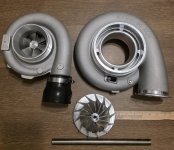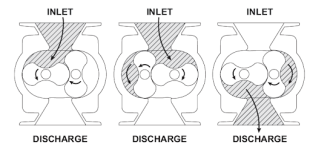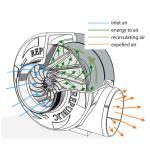Hi. While the Castle motors seem to be great at spinning up a speedmaster centri, could they manage to do a small/medium size positive displacement blower like a M62/M90 to 15-18000rpm?
Reason being, I don't want to use it for top end or even constant power, i want it to replace my 75-100 shot of nitrous as torquefill/antilag for about 500-1000rpm in the midrange to get my turbo on song for certain circumstances (straight line stuff).
Nitrous is a massively inconsistent pain in the ass so so I’ve had enough of it.
Because of the very short amount of time it will be used, a second or so at a time, the fact they’re not efficient etc is not an issue.
Reason I’d prefer one over a centri is partly cost and availability where I am, but also zero issues with it being in the usable part of the compressor map- If it spins, it flows the air, end of.
But is it viable, or no? I know they take more to spin them than a positive, but they also spin much slower.
But I also don’t know enough about electric motors to know if they work well enough at that rpm vs how they’re normally span on a Speedmaster P2 setup.
Thanks
Reason being, I don't want to use it for top end or even constant power, i want it to replace my 75-100 shot of nitrous as torquefill/antilag for about 500-1000rpm in the midrange to get my turbo on song for certain circumstances (straight line stuff).
Nitrous is a massively inconsistent pain in the ass so so I’ve had enough of it.
Because of the very short amount of time it will be used, a second or so at a time, the fact they’re not efficient etc is not an issue.
Reason I’d prefer one over a centri is partly cost and availability where I am, but also zero issues with it being in the usable part of the compressor map- If it spins, it flows the air, end of.
But is it viable, or no? I know they take more to spin them than a positive, but they also spin much slower.
But I also don’t know enough about electric motors to know if they work well enough at that rpm vs how they’re normally span on a Speedmaster P2 setup.
Thanks
Last edited:



